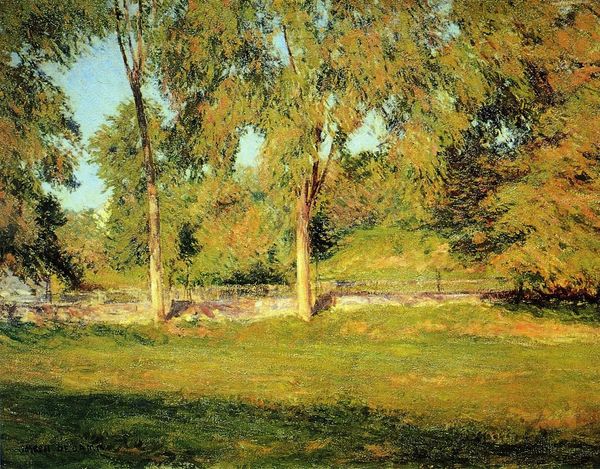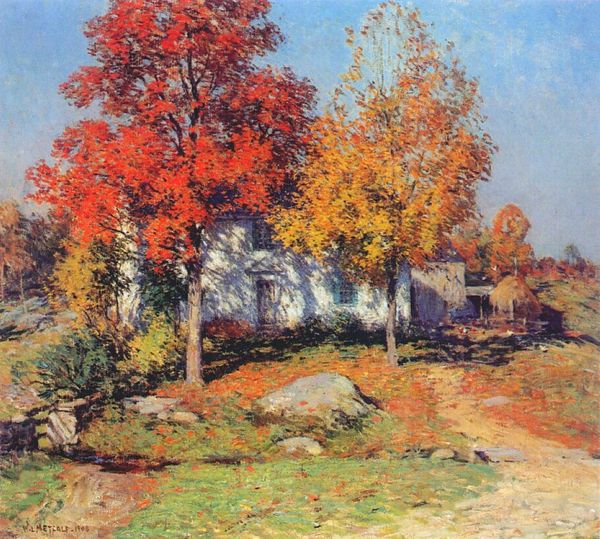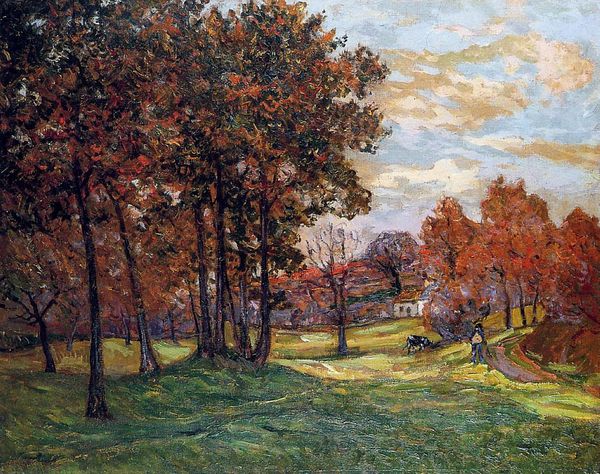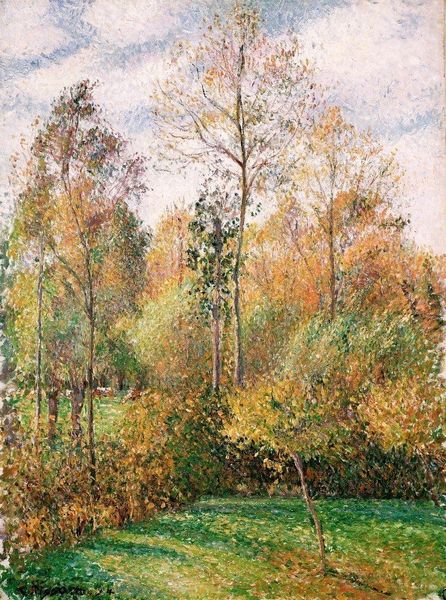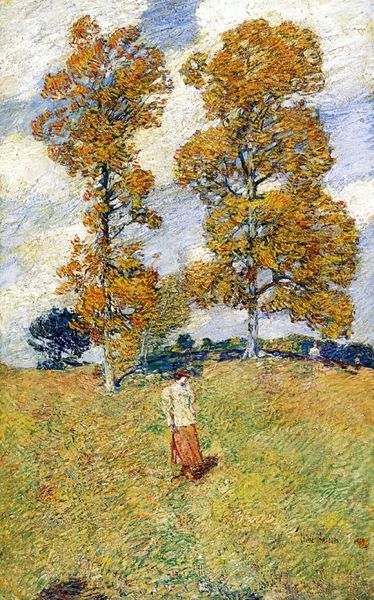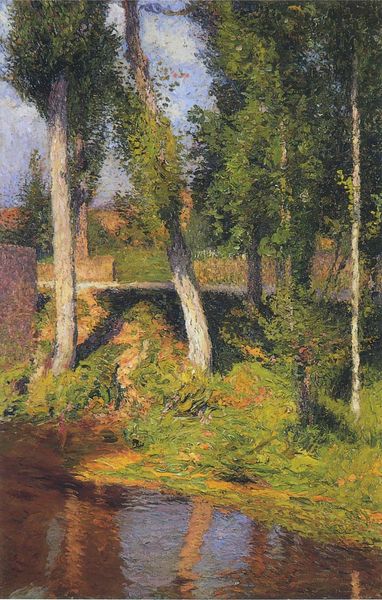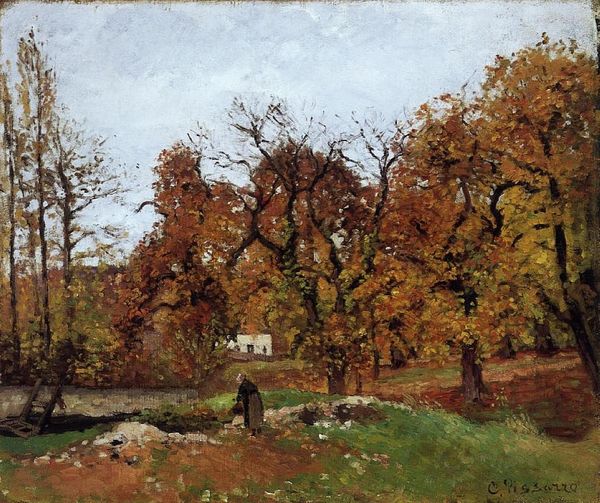
Dimensions: 66 x 73.7 cm
Copyright: Public domain
Curator: Just LOOK at it. "Early October" by Willard Metcalf. Painted in 1906, it's like staring straight into the heart of a New England autumn, pure concentrated gold. Editor: I'm immediately struck by the almost tactile quality of the light, and the way it seems to cling to every leaf and rock. It feels nostalgic. Not for a specific moment, but for the abstract idea of autumn itself, a cultural shorthand. Curator: It's Metcalf doing what he did best: capturing fleeting moments *en plein air*, trying to bottle that golden light, that particular feeling. It’s all broken brushstrokes, shimmering colors, a love letter to a landscape at its most vibrant but with a hint of the inevitable decline to come. Editor: And you can see the institutional forces that valued and cultivated this kind of pastoral landscape. These images supported the then-dominant narrative of America as Edenic, a place of natural beauty and plenty—displacing other stories. Was there space for nuance in the narrative of nationhood during this era or any acknowledgement about who benefits from painting a landscape without showing any people living in it? Curator: It makes me wonder how consciously Metcalf was engaging with these grand narratives, or if he was just a guy with his paints, smitten by the spectacle. He spent a lot of time abroad. Did he adopt ideas about painting en plein air from European styles? Did the American narrative follow? He wasn’t trying to make political statements, but paintings don't exist in a vacuum, do they? Editor: Never. Paintings participate in existing social, cultural, and historical conversations, so what may appear as something purely intuitive may actually align itself with institutional powers at work. But that aside, and as an aside only, because of course everything has historical importance, its purely visceral appeal remains intact. It still manages to stir something in us, a primal appreciation for color and light. Curator: Well put. There’s a raw vulnerability here. Like that brief moment in the season that’s fleeting and beautiful, we know what is at risk for something to grow into the space it’s given, but nothing will stop a natural transition from happening. This time is the acceptance for those new phases. That golden light won't last, will it? It can, through paintings. That's powerful. Editor: Exactly. Its endurance lies in that paradox of being both a product of its time and something transcendent. Its legacy speaks not just to the painter, but also to the ever-shifting narratives we tell ourselves about nature, art, and nation.
Comments
No comments
Be the first to comment and join the conversation on the ultimate creative platform.

